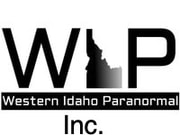The University Inn in Gooding, Idaho was built as Gooding College in 1917, and also served as a progressive tuberculosis hospital from 1947-1976.
Paranormal reports of the location include footsteps, disembodied voices, shadow figures, apparitions, objects being manipulated by unseen forces and being touched.
Western Idaho Paranormal team members rented out the entire location and spent 2 nights investigating with our good friends from the Canadian Paranormal Society.
Team members experienced hearing disembodied voices and seeing shadow figures in both the attic and basement areas, as well as manipulation of objects.
Paranormal reports of the location include footsteps, disembodied voices, shadow figures, apparitions, objects being manipulated by unseen forces and being touched.
Western Idaho Paranormal team members rented out the entire location and spent 2 nights investigating with our good friends from the Canadian Paranormal Society.
Team members experienced hearing disembodied voices and seeing shadow figures in both the attic and basement areas, as well as manipulation of objects.
Evidence from audio recorders
EVIDENCE FROM VIDEO RECORDERS
|
Female Voice (Basement Hallway)
HURRY UP (Basement Hallway)
Music (Attic)
NO ONE'S THERE (Attic)
Female Voice (Attic)
|
GET OUT (Basement Hallway)
Whisper (Basement Hallway)
Music (Attic)
Disembodied voice (Attic)
|
The following three videos are our experiences with some trigger objects that we had placed in the attic as we were investigating. These were LED cat toy balls that light up when they are moved. We are not claiming that these were manipulated by ghosts, however, we did find it interesting that they only lit up when we were asking them to. In the first video, you can hear a loud noise that diverted our attention away from the balls. One then lit up as everyone was looking the other way, which is a common occurrence in paranormal investigations; attention is redirected away from an object so it can be moved without being witnessed.
|
|
|
